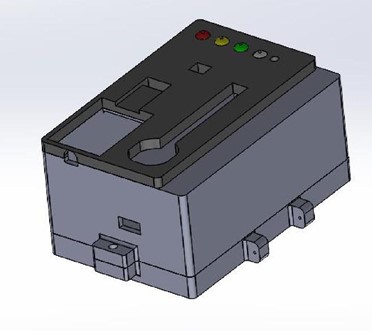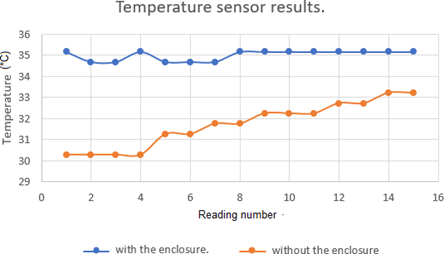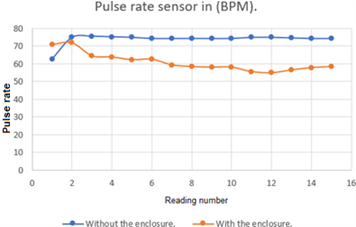





Riaan Stopforth
ORCID ID: 0000-0002-8878-2232
Stopforth Mechatronics
Robotics and Research Lab
University of KwaZulu-Natal
Durban
South Africa
A medical wearable technology was designed with all the electronic devices needed for the smartwatch to perform medical monitoring functions such as body temperature sensing and heart rate sensing. The medical smartwatch requires an enclosure for the electronic devices and a mechanism that would be worn on a human wrist. The medical smartwatch was designed to have electronic devices such as an electrocardiography (ECG) sensor, impulse and oximeter sensor, light emitting diode (LED) light, a battery, Bluetooth module, humidity and temperature sensors, flame sensor, vibrator, electromyography (EMG) sensor, Infrared (IR) LED sensor, transistor, and a Arduino board and many more. The focus was designing an enclosure that will interface between these electronic devices and the user. This paper shows the design that was considered for the enclosure, and the effect a casing has on the temperature and ECG sensors.
Keywords: medical, monitoring, wearable technology
Smartwatches or wearable technology are multifunctional wrist-worn devices that can constantly monitor the user's physiological data. Smartwatches have applications like maps, music players and schedulers installed in them (Dehghani & Kim, 2019). There are different wearable technologies that are multifunctional, with some using technologies like biosensors and wireless data communication that allow the user to access and transmit their physiological data (Lu, Fu, Ma, Fang & Turner, 2016). Smartwatches can support health in everyday living since they monitor personal activity and obtain feedback based on these measures (Reeder & David, 2016).
Constant skin contact is one of the most important features that the enclosure must have to ensure that the sensors have enough contact with the relevant part of the patient’s body. Constant skin contact in smartwatches allows easy recording of heart rate, heart rate variability, blood oxygen and galvanic skin response. Smartwatches that estimate heart rate are gaining popularity and are becoming useful in medical tools in many ways. Although many smartwatches are not marketed for medical use, these devices have proven to be useful in patients with arrhythmias. There has been an increasing number of visits to medical rooms due to heart rate abnormalities detected by smartwatches (Koshy et al., 2017).
The use of wearable medical devices helps reduce hospital visits and admissions because of improperly managed personal health. Medical smartwatch users agreed that the wearable technology help them engage with their health. Companies worldwide are looking at the benefits that could come from the use of medical smartwatches by their employees. Medical smartwatches enable customers to have wearable pressure monitors and electrocardiography (ECG) sensors (Phaneuf, 2021).
There are mandatory quality management systems for medical devices to ensure that all medical devices adhere to all regulations before entering the markets. There are two regulations for medical device manufactures, these are ISO 13485 and 21 CFR 820. These regulations ensure that the medical devices are efficient and safe to use. ISO 13485 is focused on certificates based on the quality management system, management responsibility, resource management, product realisation and measurement, analysis, and improvement (Ramakrishna, Tian, Wang, Liao & Teo, 2015).
The following design and methods were utilised for the developed wearable technology.
The design as shown in Figure 1 was developed. It must be noted that this wearable device, also referred to as a smartwatch, does not display any information but integrates to the linked smartphone. The ECG was connected using wired electrodes that are attached to the forearm for sensing.

Tests were conducted for the different sensors to test the accuracy of the reading obtained by the sensor when they operate without the enclosure and inside the enclosure. These tests are performed to determine the deviations caused by the integration of the electronics with the enclosure.
The sensors that were tested were the LM35 temperature sensor and the Key studio AD8232 electrocardiography (ECG) sensor. With the temperature sensor, it is possible to measure the temperatures at the same time with two different sensors, one attached to the enclosure, and the other placed in contact with the person's skin. With the ECG comparison, it is possible to take readings with two different ECG sensors, one attached to the enclosure, while the other was placed in contact with the person's skin without the enclosure.
The temperature test results are shown in Figure 2. It is evident that the temperature sensor with the enclosure was consistent. The sensor that was not covered by the enclosure, shows in increase in temperature over time. The reason for the initial lower temperature was that the sensor exposed to the surrounding environment allows it to cool down by the moving air around it, and the temperature sensor had to stabilise with the transfer of heat from the person’s body to the sensor.

The pulse rate sensor results are seen in Figure 3. The ECG sensor outside the enclosure was stable after two seconds, fluctuating with an increase or decrease of two bpm. The ECG sensor in the enclosure shows a decrease in the pulse rate over time, with a larger fluctuation of 17 bpm. These tests prove that the enclosure and electronics within the enclosure, has an impact on the readings. It is recommended that future work requires a means to prevent interference from other electronics with the ECG sensor.

An enclosure was designed and tested to be used for a wearable device or a smartwatch technology. The effect that the enclosure has on the sensors were of interest, to identify if the sensors would need to be calibrated accordingly. The research contributions presented in this paper were achieved. The design of a wearable technology casing that will be in contact with a person's skin, has been developed. It was shown that the temperature sensor was able to obtain a stable reading when in contact with the enclosure, to prevent interference from the environment. Yet, with the pulse rate sensor, it was found that there was interference with the electronics inside the casing, and therefore an insulation from interference must be considered for future wearable devices.
There is scope for future work. It would be of interest to examine sensor readings and the calibration criteria required if the sensors were placed in a watertight casing.
The authors are thankful for the support and sponsorship of MerSETA and MediVentors. The authors also thank Sibongiseni Khumalo, Jasveer Pillay, Aliya Singh and Kerina Virasamy for their involvement with the MediVentors on this research. Finally, the authors thank Pragesh Govender for guidance on the research requirement.
Dehghani, M., & Kim, K. (2019). The effects of design, size, and uniqueness of smartwatches: perspectives from current versus potential users. Behaviour & Information Technology, 38(11), 1143-1153. DOI:10.1080/0144929x.2019.1571111
Koshy, A., Sajeev, J., Zureik, M., Street, M., Wong, M., Roberts, L., & Teh, A. (2017). Accuracy of Smart Watches in Arrythmias: Smarts Study. Journal of the American College of Cardiology, 69(11), 337. DOI:10.1016/S0735-1097(17)33726-9
Lu, T., Fu, C., Ma, M., Fang, C., & Turner, A. (2016). Healthcare Applications of Smart Watches. Applied Clinical Informatics, 07(03), 850-869. DOI:10.4338/aci-2016-03-r-0042
Phaneuf, A. (2021). Latest trends in medical monitoring devices and wearable health technology. Retrieved 11 January 2021, from https://www.businessinsider.com/wearable-technology-healthcare- medicaldevices? IR=T
Ramakrishna, S., Tian, L., Wang, C., Liao, S., & Teo, W. (2015). Medical devices. Woodhead Publishers.
Reeder, B., & David, A. (2016). Health at hand: A systematic review of smart watch uses for health and wellness. Journal of Biomedical Informatics, 63, 269- 276. DOI:10.1016/j.jbi.2016.09.001